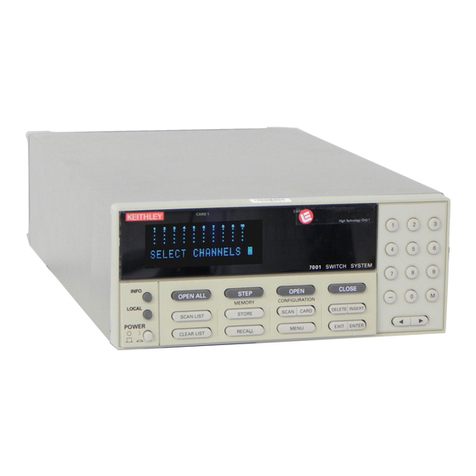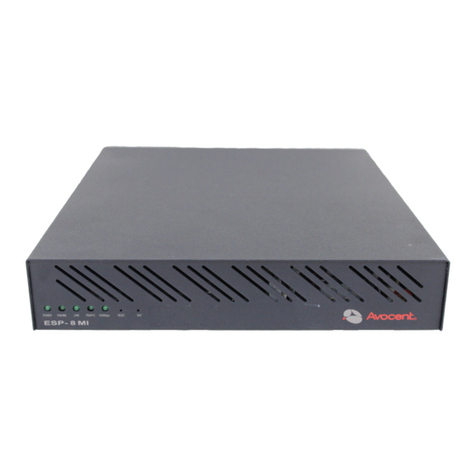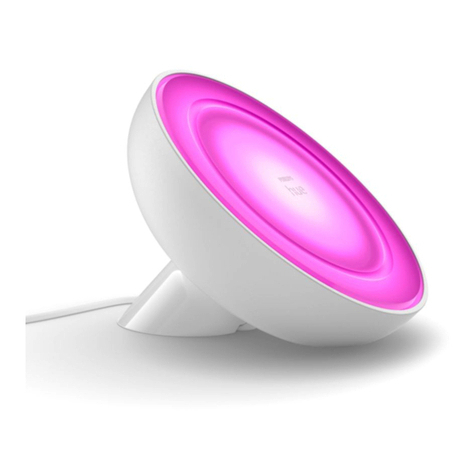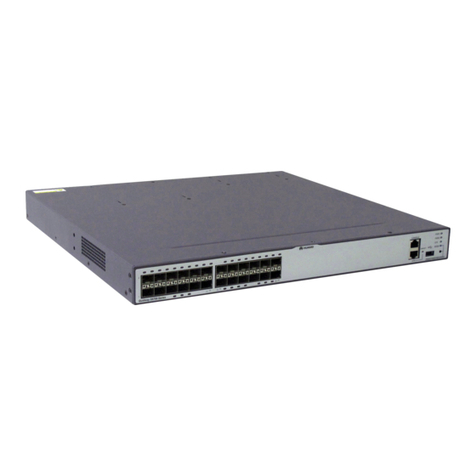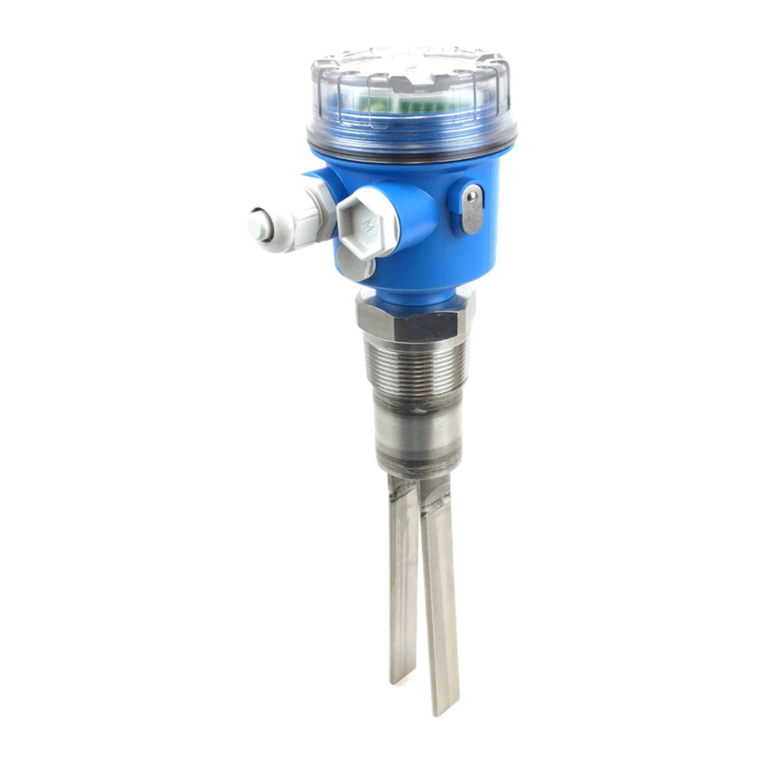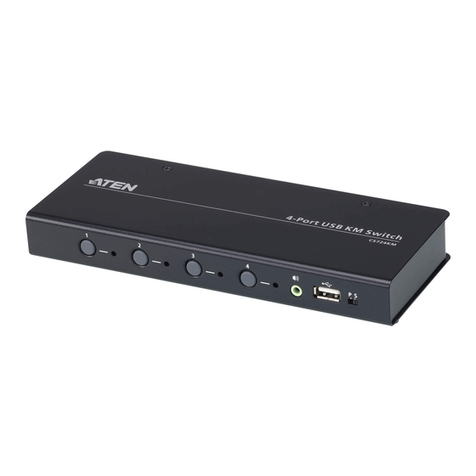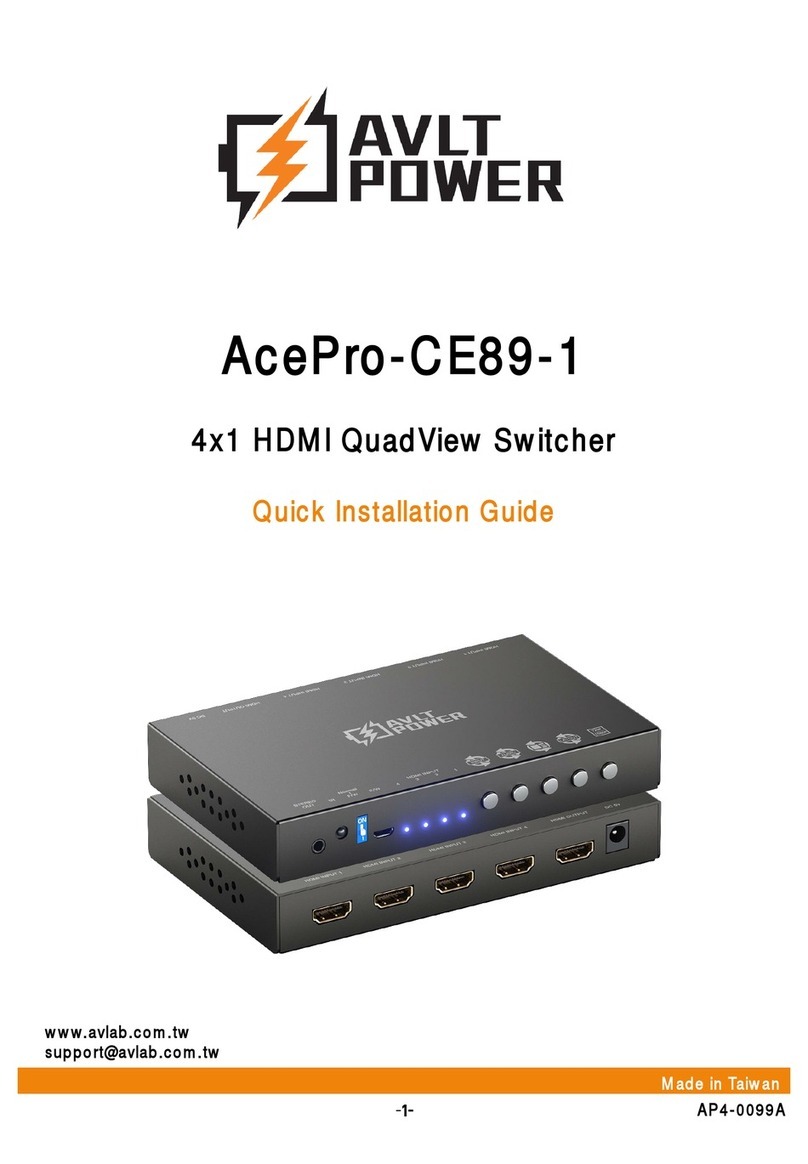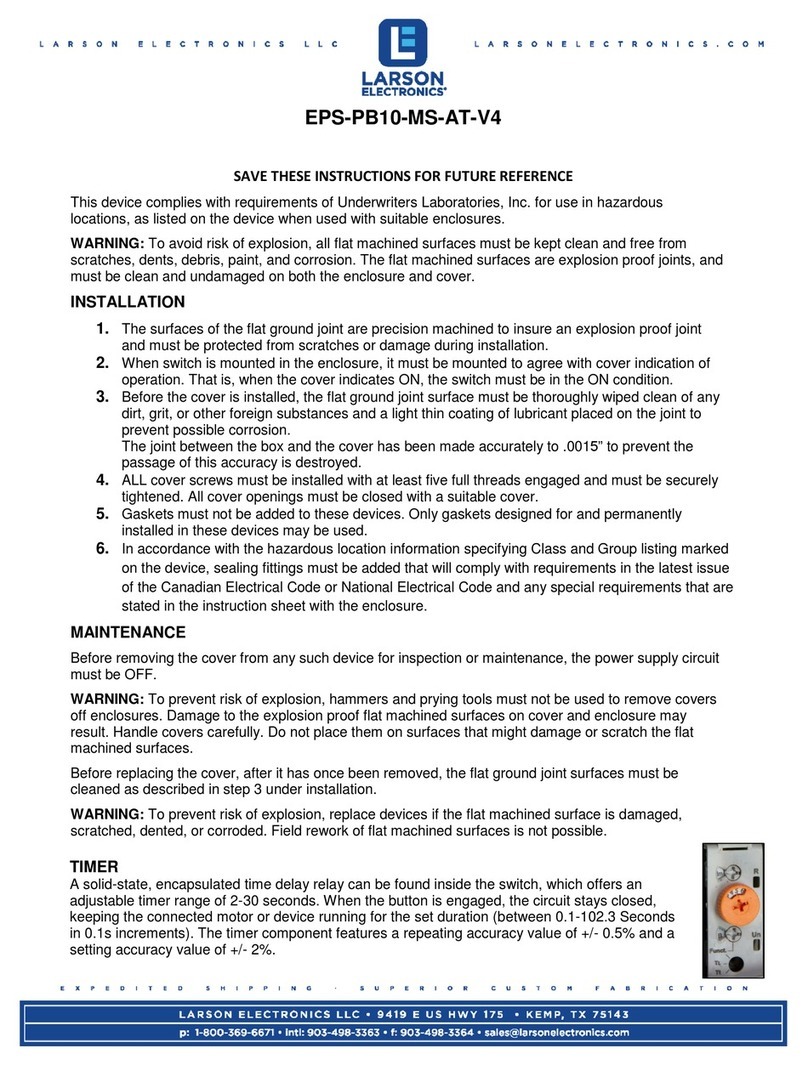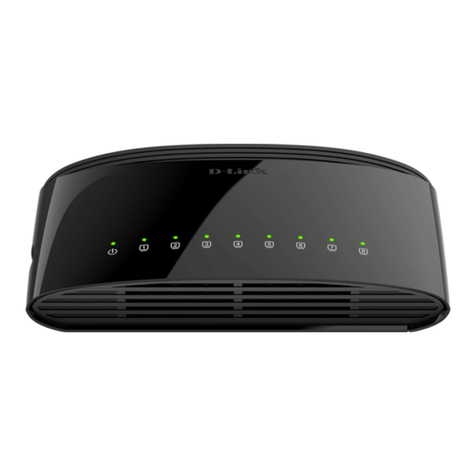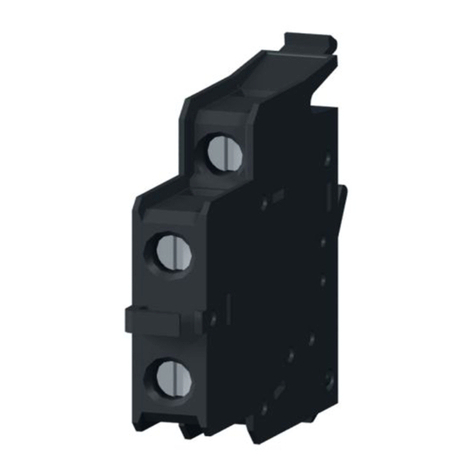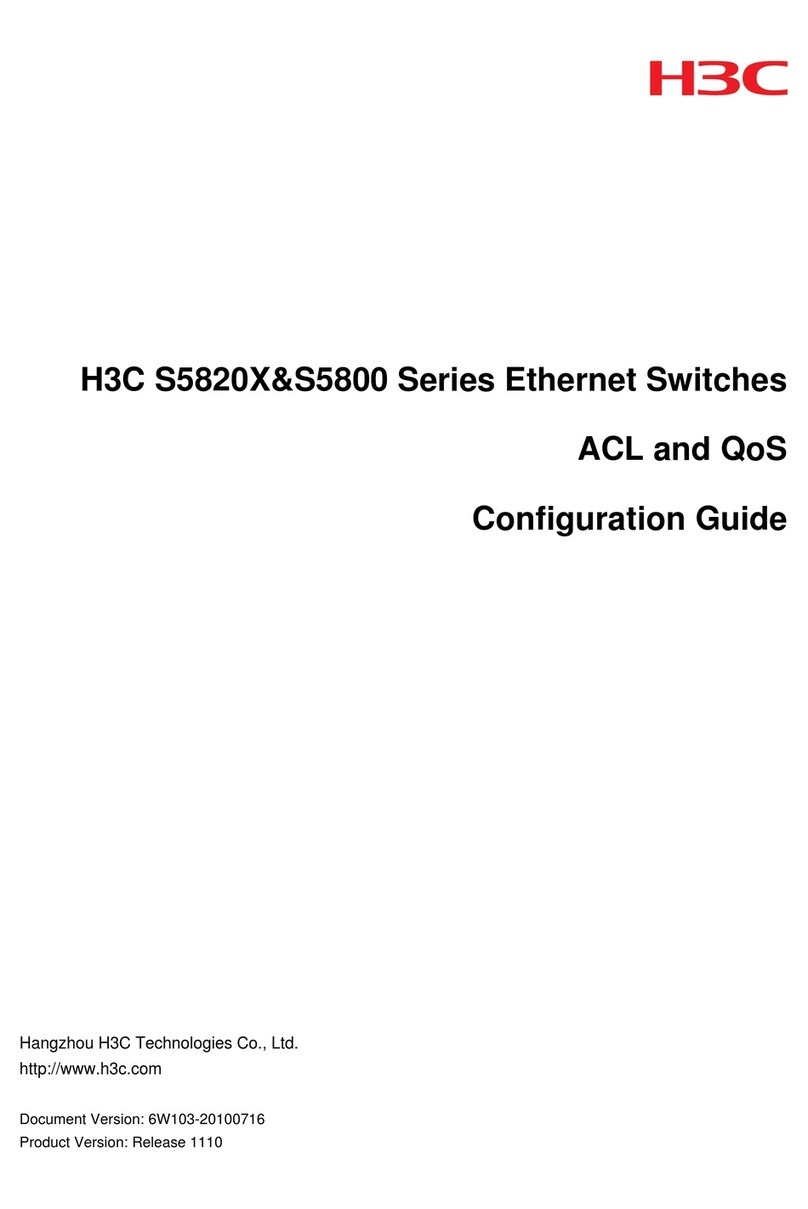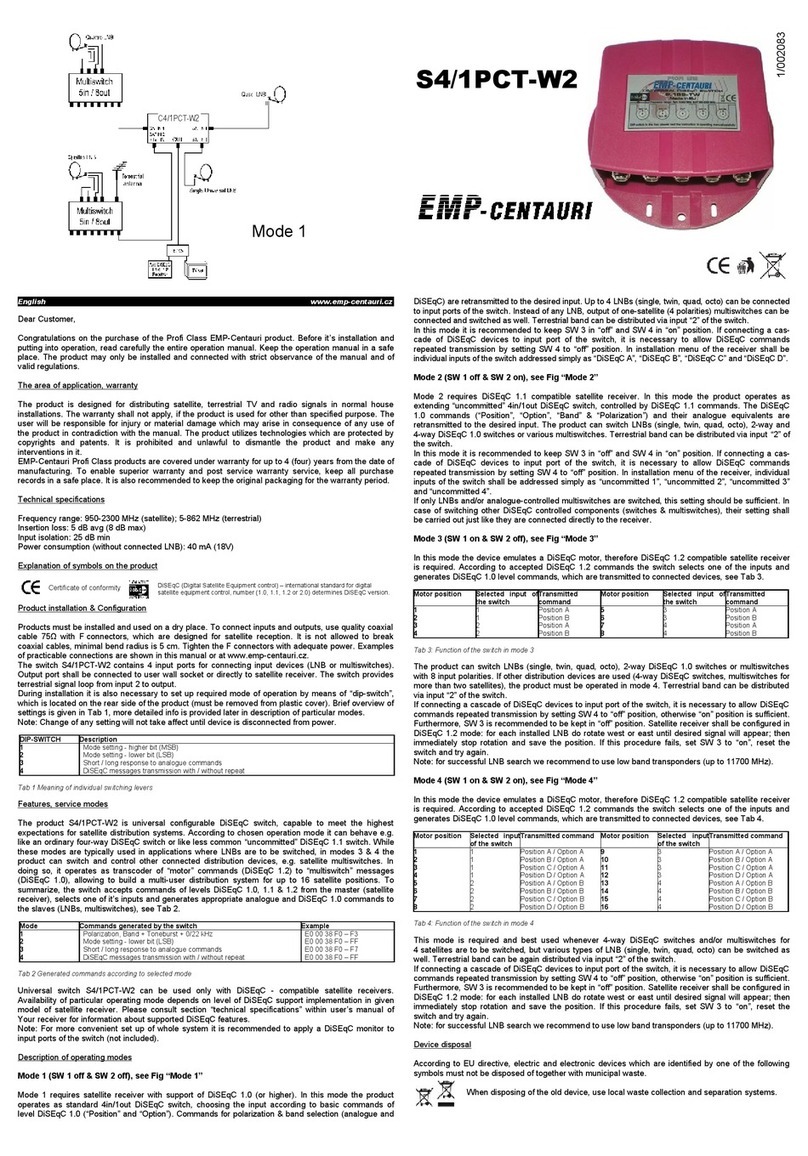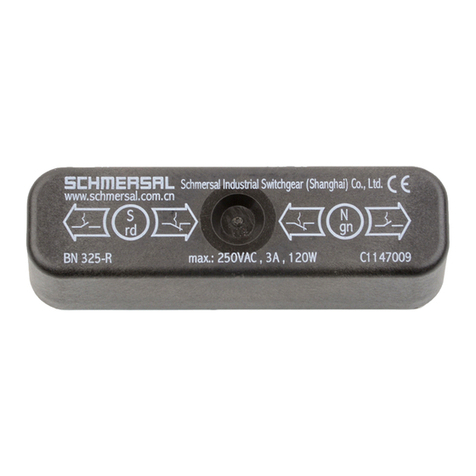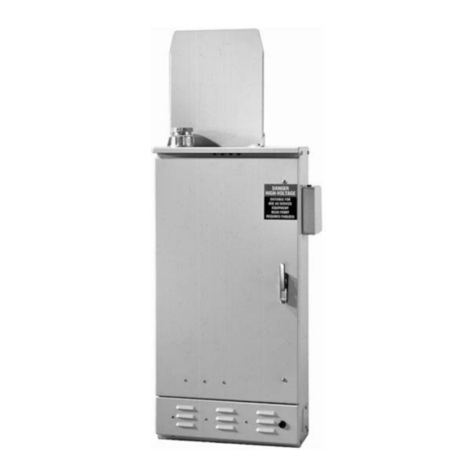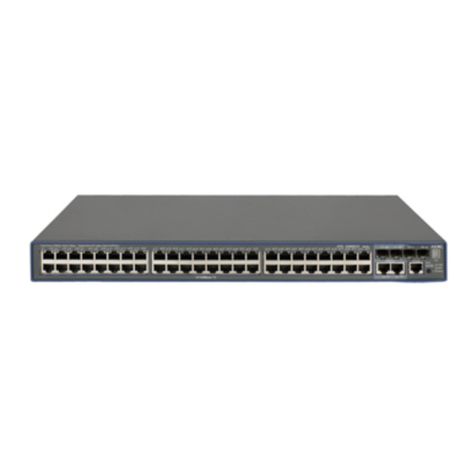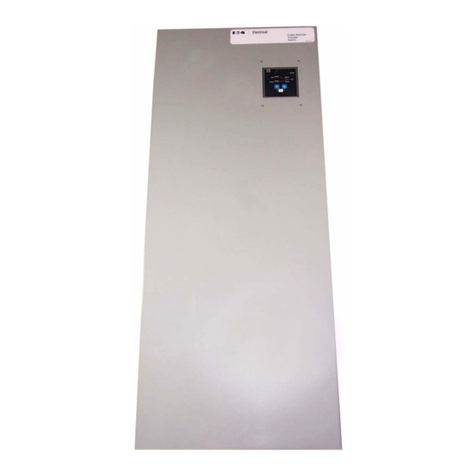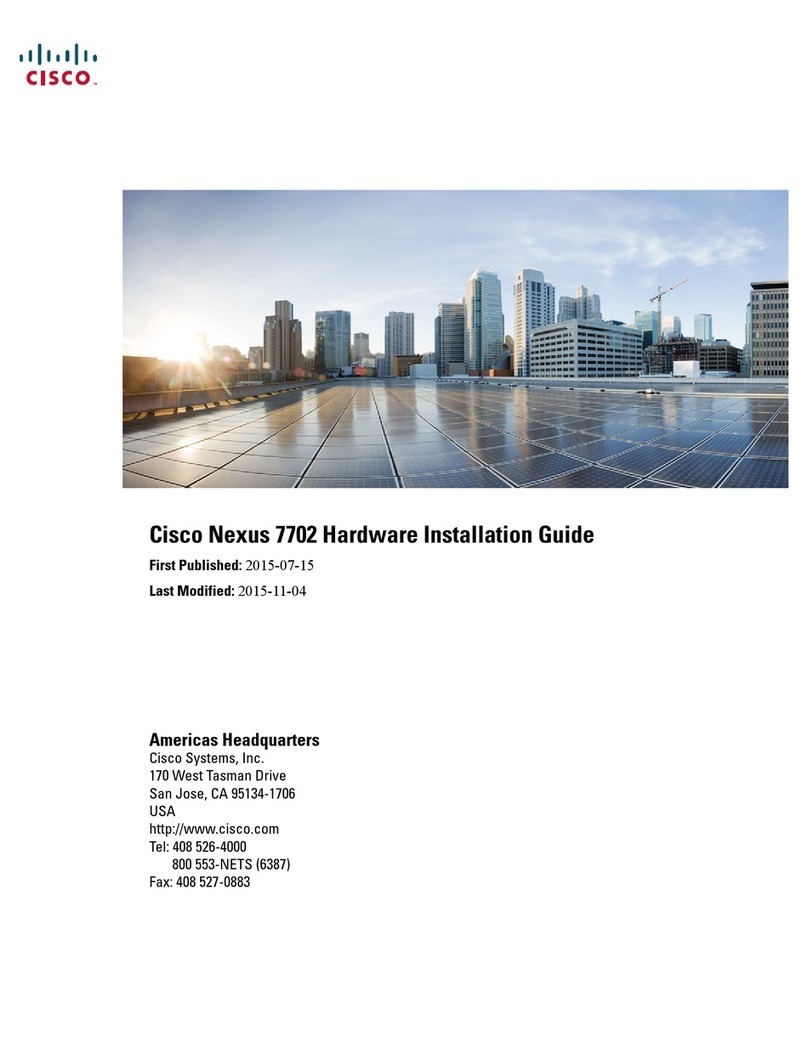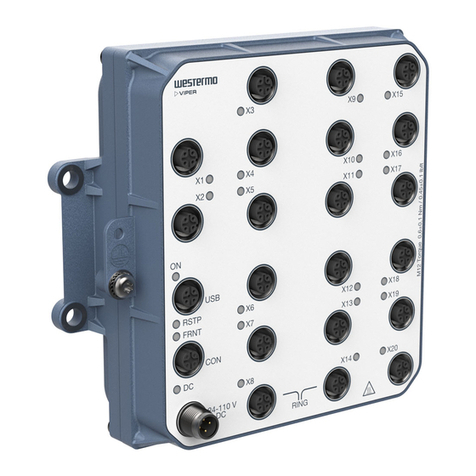DEGREE CONTROLS S-Series User manual

S-Series Air Flow Switches USER GUIDE 66101MN000-A02
S-Series Air Flow Switches USER GUIDE 66101MN000-A02 1
S-Series Air Flow Switches
User Guide
DEGREE CONTROLS, INCORPORATED
18 Meadowbrook Drive
Milford, New Hampshire 03055 USA
Degree Controls, Inc. © Copyright 2018, all rights reserved.
Information in this document is subject to change without notice.
Windows® is a registered trademark of Microsoft Corporation • All other trademarks are property of their respective owners.

S-Series Air Flow Switches USER GUIDE 66101MN000-A02
S-Series Air Flow Switches USER GUIDE 66101MN000-A02 2
Table of Contents
1General Information .................................................................................................................................................................3
1.1 Overview ..................................................................................................................................................................................3
1.2 Features....................................................................................................................................................................................3
1.2.1 Mechanical Features........................................................................................................................................................3
1.2.2 Electrical & Performance Features ..................................................................................................................................3
2Product Specifications...............................................................................................................................................................4
2.1 General Specifications..............................................................................................................................................................4
2.2 Model Specifications ................................................................................................................................................................4
2.3 Hardware Configuration...........................................................................................................................................................5
2.4 Trip Point Configuration ...........................................................................................................................................................5
3Wiring Information ...................................................................................................................................................................7
3.1 Open Drain Output...................................................................................................................................................................7
3.2 Open Drain with RXD/TXD Output ...........................................................................................................................................7
3.3 Solid State Relay Output...........................................................................................................................................................7
3.4 Solid State Relay with RXD/TXD Output ...................................................................................................................................7
3.5 Wiring Diagrams .......................................................................................................................................................................8
3.5.1 Open Drain Style Output .................................................................................................................................................8
3.5.2 Solid State Relay Style Ouput ..........................................................................................................................................9
4Mechanical Information..........................................................................................................................................................11
4.1 Switch Head Mechanical Drawings ........................................................................................................................................11
4.2 °C Clamp Mechanical Drawing ...............................................................................................................................................11
5Mounting and Positioning.......................................................................................................................................................12
5.1 Gland Installation ...................................................................................................................................................................12
5.2 °C Clamp Installation ..............................................................................................................................................................13
5.3 Airflow Direction ....................................................................................................................................................................14
6Communication.......................................................................................................................................................................15
6.1 UART.......................................................................................................................................................................................15
6.1.1 Hardware .......................................................................................................................................................................15
6.1.2 Configuration.................................................................................................................................................................15
6.2 I2C ...........................................................................................................................................................................................16
6.2.1 Configuration.................................................................................................................................................................16
7Sensor Registers......................................................................................................................................................................19
7.1 Memory Map..........................................................................................................................................................................19
8Degree Controls Inc. Product Warranty...................................................................................................................................23

S-Series Air Flow Switches USER GUIDE 66101MN000-A02
S-Series Air Flow Switches USER GUIDE 66101MN000-A02 3
1 General Information
1.1 Overview
Thank you for your purchase of a DegreeC S-Series Switch,
a versatile and rugged, high-performance air velocity switch
with both relay and digital communication outputs.
Designed with conformal coated electronics and sealed enclosure, our Switch Products are suitable for demanding
applications, including those in corrosive or alkaline environments. With its robust, splash proof design and UV tolerant
construction, our Switches are designed to handle a wide range of product and process control air flow applications.
Additionally, the Switch series is configured to order, with a variety of velocity ranges, mechanical lengths, and output
communication styles available.
The S-Series Switches are manufactured in directional and non-directional styles. Directional Switches only sense flow
from one direction, and are immune to flow reversals. Non-directional Switches will sense flow from either direction in
the duct or environment. Non-directional Switches are most popular, and enjoy a performance advantage over the
directional variant.
1.2 Features
1.2.1 Mechanical Features
• Two available mounting styles: Standard clamp
or special gland fitting used for mounting sensor
assembly, without need for screws, or hands
inside the duct.
• Available in directional (only senses flow from
one direction) and non-directional (senses flow
from either direction) styles.
• Optimized flow geometry with segregation of
velocity and temperature elements for highest
accuracy.
• Aerodynamic cross section to minimize flow
disturbance.
• Robust, sealed probe assembly uses corrosion
and UV resistant materials.
• Printed insertion depth markers and flow
direction arrow.
• Conformal coated sensing elements and
electronics for environmental protection.
• Plenum-rated cabling suitable for HVAC,
laboratory and process control applications.
• RoHS compliant
1.2.2 Electrical & Performance Features
• Up to 5% (non-directional) and 10% (directional)
trip point accuracy, with repeatability within ±2%.
• ±1°C temperature accuracy with repeatability
within ±1°C.
• Integrated temperature sensor for dual purpose
airflow switching.
• User selectable trip point.
• Trip on Velocity and/or Temperature.
• High or low side trip point alarming.
• Best in class acceptance angle performance.
• Wide voltage input options 4.5 –15 VDC,
19 –29 VDC, or 22 –26 V AC/DC.
• <10 second start-up time.

S-Series Air Flow Switches USER GUIDE 66101MN000-A02
S-Series Air Flow Switches USER GUIDE 66101MN000-A02 4
2 Product Specifications
2.1 General Specifications
Operating Temperature
0°C to 60°C (32°F to 140°F)
Storage Temperature
-40°C to 105°C (-40°F - 220°F)
Relative Humidity
5 –95%
Acceptance Angle
± 30°
Alarm Delay
Configurable 5-256s (5s default)
Recovery Point
>0.25 m/s: 15% deviation from trip point
0.15 –0.25 m/s: 25% deviation from trip point
Trip Point Accuracy
Non-directional: 5% + .05 m/s (10 fpm) from calibrated trip point
Directional: 10% + .05 m/s (10 fpm) from calibrated trip point
Trip Point Range
Non-Directional: 0.15 - 20 m/s (30 –4,000 fpm)
Directional: 0.3 - 20 m/s (60 –4,000 fpm)
Repeatability
± 1% of reading (under identical conditions) –Non-Directional
± 2% of reading (under identical conditions) –Directional
Temperature Accuracy
± 1° (at > 0.5 m/s [100 fpm])
Warm Up Time
< 10 sec
Alarm Output –Relay
Solid State Relay - N.O. or N.C.
Contacts Open Without Power
60V Peak (AC/DC); 0.8A Max
Alarm Output –Open Drain
MOSFET Transistor - N.O. or N.C.
40V Peak (DC); 110mA Max
Communications (Optional)
I2C (400KHz) or 3.3V UART
Cable Length
2 m (6 ft.)
Housing Construction
Polycarbonate (PC), UL94-V0 (head) UL94-HB (housing)
Plenum Rated Cable
22 AWG
Environmental Protection
IP65 electronics, including conformal coated sensing element
Standard Dimension
Selectable lengths (See Section 2.3, Length)
Temperature Compensation: The S-Series Switch is a thermal airflow switch; it is sensitive to changes in air density and measures
velocity with reference to a set of standard conditions (21°C (70°F), 760mmHg (101.325kPa), and 0%RH). The S-Series Switch has
been designed and calibrated to automatically compensate for temperature effects up to 60°C.
2.2 Model Specifications
Degree Controls offers three models of the S-Series Switch. The choice of model depends on the user’s voltage range
and current requirements, as noted below:
Input Voltage Range
Current Consumption
S300
4.5 –15 VDC
< 35mA nominal (with Open Drain output)
< 70mA nominal (with Relay output)
S400
19 –29 VDC
< 15mA nominal (with Open Drain output)
< 30mA nominal (with Relay output)
S500
22 –26 VDC/VAC
< 75mA nominal (with Open Drain output)
< 125mA nominal (with Relay output)

S-Series Air Flow Switches USER GUIDE 66101MN000-A02
S-Series Air Flow Switches USER GUIDE 66101MN000-A02 5
2.3 Hardware Configuration
Direction
1 = Non-directional (most common)
2 = Directional (for special applications where flow reversal must be ignored)
Length
S300
1 = 152mm [6.0”]
max insertion depth = 110 mm
[4.3”]
2 = 211mm [8.3”]
max insertion depth = 169 mm
[6.7”]
3 = 287mm [11.3”]
max insertion depth = 245 mm
[9.6”]
S400
1 = 114mm [4.5”]
max insertion depth = 72 mm
[2.8”]
2 = 152mm [6.0”]
max insertion depth = 110 mm
[4.3”]
3 = 211mm [8.3”]
max insertion depth = 169 mm
[6.7”]
4 = 287mm [11.3”]
max insertion depth = 245 mm
[9.6”]
S500
1 = 183mm [7.2”]
max insertion depth = 140 mm
[5.5”]
2 = 287mm [11.3”]
max insertion depth = 245 mm
[9.6”]
Output
1 = Relay
2 = Open Drain
Polarity
1 = Normally Open (N.O.)
2 = Normally Closed (N.C.)
Communication*
UART or I2C
*Note: For an additional charge, the S-Series Switches can be configured with digital communication, with either UART or I2C.
Call DegreeC for ordering information.
2.4 Trip Point Configuration
In addition to selecting direction, length, output, and polarity, the S-Series Switches can be configured with a variety of
additional features as noted below:
• Trip Point –determines the point at which the switch will trip and open/close.
• Alarm Delay –defines the amount of time after the trip point has been passed before the alarm is triggered
(default is 5 seconds, with a maximum of 256 seconds)
• Recovery Point –the point at which the Switch moves out of its alarm state and reverts to normal state (see
section 2.1 General Specifications for more information).
• Alarm above or below the trip point (see above for trip point definition) –Examples below (trip point set to
100 fpm):
1. Alarm Above Trip Point: The Switch will alarm when the velocity is greater than 100 fpm and the alarm
delay time has been exceeded. The alarm will clear when the velocity goes below the recovery point of
85 fpm.
2. Alarm Below Trip Point (default and most common): The Switch will alarm when the velocity is less
than 100 fpm and the alarm delay time has been exceeded. The alarm will clear when the velocity goes
above the recovery point of 115 fpm.

S-Series Air Flow Switches USER GUIDE 66101MN000-A02
S-Series Air Flow Switches USER GUIDE 66101MN000-A02 6
Trip Point Configuration Figure 1: Alarming Above the Trip Point
Trip Point Configuration Figure 2: Alarming Below the Trip Point

S-Series Air Flow Switches USER GUIDE 66101MN000-A02
S-Series Air Flow Switches USER GUIDE 66101MN000-A02 7
3 Wiring Information
Depending on the choice of output when configuring the S-Series Switch, wire configurations will differ, as noted below:
3.1 Open Drain Output
Wire Color
Wire Gauge
Description
Black
22 AWG
Power Supply Ground
Red
Power Supply Positive Voltage
White
Open Drain
3.2 Open Drain with RXD/TXD Output
Wire Color
Wire Gauge
Description
Black
22 AWG
Power Supply Ground
Red
Power Supply Positive Voltage
White
Open Drain
Blue
UART: TXD is the 3.3V UART Transmit signal
I2C: SDA is the Bi-Directional Data line
Orange
UART: RXD is the 3.3V UART Receive signal
I2C: SCL is the Clock line
3.3 Solid State Relay Output
Wire Color
Wire Gauge
Description
Black
22 AWG
Power Supply Ground
Red
Power Supply Positive Voltage
Green
Relay Pin 1
White
Relay Pin 2
3.4 Solid State Relay with RXD/TXD Output
Wire Color
Wire Gauge
Description
Black
22 AWG
Power Supply Ground
Red
Power Supply Positive Voltage
Green
Relay Pin 1
White
Relay Pin 2
Blue
UART: TXD is the 3.3V UART Transmit signal
I2C: SDA is the Bi-Directional Data line
Orange
UART: RXD is the 3.3V UART Receive signal
I2C: SCL is the Clock line
Notes:
1. For I²C communication, external pull-up resistors to +3.3V for SDA and SCL are required.
The S-Series Switch does not have internal pull-up resistors. I²C Maximum Clock Frequency is 400 KHz.
2. For RS232 communication, an external level shifter is required to convert 3.3V TTL to RS232 voltage levels.
The S-Series Switch’s RX and TX signals are 3.3V TTL.

S-Series Air Flow Switches USER GUIDE 66101MN000-A02
S-Series Air Flow Switches USER GUIDE 66101MN000-A02 8
3.5 Wiring Diagrams
3.5.1 Open Drain Style Output

S-Series Air Flow Switches USER GUIDE 66101MN000-A02
S-Series Air Flow Switches USER GUIDE 66101MN000-A02 9
3.5.2 Solid State Relay Style Ouput
3.5.2.1 Isolated Grounds
3.5.2.2 Non-Isolated Grounds

S-Series Air Flow Switches USER GUIDE 66101MN000-A02
S-Series Air Flow Switches USER GUIDE 66101MN000-A02 10
3.5.2.3 Multiple Isolated Grounds
3.5.2.4 Multiple Non-Isolated Grounds

S-Series Air Flow Switches USER GUIDE 66101MN000-A02
S-Series Air Flow Switches USER GUIDE 66101MN000-A02 11
4 Mechanical Information
4.1 Switch Head Mechanical Drawings
4.2 °C Clamp Mechanical Drawing
Mechanical Figure 3: °C Clamp
Mechanical Figure 1: S-Series Switch Head
(Non-Directional)
Mechanical Figure 2: S-Series Switch Head
(Directional)

S-Series Air Flow Switches USER GUIDE 66101MN000-A02
S-Series Air Flow Switches USER GUIDE 66101MN000-A02 12
5 Mounting and Positioning
Mounting Figure 1: Switch Dimensions (Non-Directional Head shown)
Note: Two sensor lengths are available to accommodate insertion depths of 61mm [1.25"] to 245mm [9.6"]. See Mounting Figure 1
above for insertion "zero point" datum.
The S-Series Switch utilizes either a °C Clamp or Gland fitting for installation. Please follow the below instructions for
optimal installation:
5.1 Gland Installation
1. Drill a 13/16” (20mm) hole into the surface you wish to install the Sensor into.
• Follow the below instructions to install the Sensor via Gland Fitting.
2. Adjust the Sensor’s insertion depth (use the printed ruler on
the Sensor’s body for reference) and tighten the gland nut
onto the Sensor body (“A” in Figure 2 below).
3. Insert the Sensor into the drilled hole wider flange first
(“B” in Figure 2 below), then rotate into position, ensuring
that the airflow indicators (arrows on the orange head;
see Figure 4 below) are facing the correct direction.
4. Tighten the mounting nut (“C” in Figure 2 below) in the left-
hand direction.
Mounting Figure 2: Gland Nut
S-Series Switch with Gland Fitting
A
B
C
Side View
Front View

S-Series Air Flow Switches USER GUIDE 66101MN000-A02
S-Series Air Flow Switches USER GUIDE 66101MN000-A02 13
5.2 °C Clamp Installation
1. Mark the sensor hole, and screw positions, per Step 1 of Figure 4, below.
2. Drill a 17/32” (14mm) hole through the surface you wish to install the
Sensor.
3. Drill two pilot holes for the °C Clamp fastening screws.
4. Secure the °C Clamp with two screws.(not provided)
5. Insert the Sensor into the °C Clamp and adjust the Sensor’s insertion
depth (use the printed ruler on the Sensor’s body for reference), ensuring
that the airflow indicators (arrows on the blue or orange head; see section
5.3 Airflow Direction) are facing in the intended direction.
6. Using the provided screw, tighten and cinch the sensor into place.
7.
Mounting Figure 3: °C Clamp
Mounting Figure 4: °C Clamp Installation
Back View
Front View
S-Series Switch with °C Clamp Fitting
Step 1
Step 2
Step 4Step 5Step 3

S-Series Air Flow Switches USER GUIDE 66101MN000-A02
S-Series Air Flow Switches USER GUIDE 66101MN000-A02 14
5.3 Airflow Direction
To ensure that the Switch actuates within its published specifications, proper mounting precautions must be followed:
• The main airflow cavity that surrounds the flow thermistor must be orientated perpendicular to the airflow
being monitored.
• When monitoring air velocity within a pipe or duct, mount the sensor so that the main flow cavity is in the
center of the pipe or duct. Avoid mounting the sensor in turbulent locations caused by elbows, duct size
changes, etc. If airflow turbulence causes excessive airflow reading variation, increasing the Sample Time (index
63)may solve the problem.
Airflow Figure 1: Direction of Airflow (Non-Directional)
Airflow Figure 2: Direction of Airflow (Directional)

S-Series Air Flow Switches USER GUIDE 66101MN000-A02
S-Series Air Flow Switches USER GUIDE 66101MN000-A02 15
6 Communication
The S-Series Switches support two methods of communication: UART and I2C. The choice of communication is set up at
DegreeC prior to shipment.
6.1 UART
The communication protocol described below is for communication between a master host and the slave Switch
product. This protocol is used to read/write configuration variables and to read process variables from the Switch.
• The host can configure the Switch by transmitting a “Memory Write” command which contains the memory
index and the new data within the command.
• The host reads configuration variables using the “Memory Read” command.
• For multi-byte configuration variables, the data format is “little endian”. The lowest address is the least
significant byte.
Four process system variables ( Velocity, Tamb, Power, and Raw Velocity) can also be read from the Switch using the
“Read Velocity”, “Read Tamb”, “Read Power”, and “Read Raw Velocity” commands, as noted below:
Byte
1
2
3
4
1
2
3
4
Read
Velocity
1
0
0
checksum
Velocity
(Hi)
Velocity
(Lo)
0
checksum
Read
Tamb
2
0
0
checksum
Tamb
(Hi)
Tamb
(Lo)
0
checksum
Read
Power
3
0
0
checksum
Power
(Hi)
Power
(Lo)
0
checksum
Memory
Write
6
Memory
Index
Data
checksum
Memory
Index
Data
0
checksum
Memory
Read
7
Memory
Index
0
checksum
Memory
Index
Data
0
checksum
Read Raw
Velocity
9
0
0
checksum
Velocity
Raw
(Hi)
Velocity
Raw
(Lo)
0
checksum
RESET
12
0
0
checksum
n/a
n/a
n/a
n/a
UART Figure 1: Process System Variables
6.1.1 Hardware
The Switch’s UART RX and TX signals are digital signals from the internal processor’s UART. To convert to true RS232
signals, an external level shifter is required.
6.1.2 Configuration
UART configuration is fixed at 19200 baud rate, 8 data bits, no parity, 1 stop bit.
Protocol
The switch is a slave device and supports several different commands. Both transmission and reply command message
lengths are four bytes. The fourth byte is a checksum byte to verify message integrity. The checksum byte is determined
by performing an “exclusive or” logic operation of the first three bytes. The tables below define the seven host
commands supported and the appropriate switch reply.

S-Series Air Flow Switches USER GUIDE 66101MN000-A02
S-Series Air Flow Switches USER GUIDE 66101MN000-A02 16
Password Protection
Setpoints designated as (RWP) in the Memory Map require two consecutive Memory Write commands to change the
setpoint.
• Command #1: Memory Write 0xAA to the Password (index 83).
• Command #2: Memory Write the new value to the password protected register. If valid, Switch will accept the
commands and write the new value. The Password (index 83) is automatically reset to 0xFF, the protected
default state.
6.2 I2C
The communication protocol described below is for communication between the I2C master host and the I2C slave
Switch. This protocol is used to read/write configuration variables and to read process variables from the Switch.
Reading and writing to the Switch uses the same protocol that is commonly used to read and write to EEPROM’s.
For multi-byte configuration and process variables, the data format is “little-endian”, the low order byte of the number
is stored in memory at the lower address.
6.2.1 Configuration
The protocol sequence is as follows:
• Each switch starts out with a default Address of 192. This address may be changed to an arbitrary 8-bit value by
writing to the switch’s I2C address register and cycling power.
• The I2C commands for the switches are defined as per the following tables:
1
7
1
1
8
1
8
1
1
S
Slave
Addres
s
Wr
A
Sub
Addres
s
A
Data
Byte
A
P
S
=
Start bit
Slave Address
=
Switch Address
Wr
=
0
A
=
Acknowledge from the
Switch
Sub Address
=
Index into the Switch’s
Memory Map
Data Byte
=
Data written to the switch
at the Sub Address
P
=
Stop bit
I2C Figure 1: Write Byte
Caution:
• If the switch receives a message with an invalid command byte or an invalid checksum, the message will be
discarded and the Switch will not reply.
• If the switch receives a partial message, the message will be discarded and the Switch will not reply.
• The host should use the “Read Velocity”, “Read Tamb”, “Read Power”, and “Read Raw Velocity” commands
to read these double byte variables.
• When reading the double byte process variables Velocity (index 67), Raw Velocity (index 69), T Ambient
Temperature (index 71), T Flow Temperature (index 73), Power Average (index 75), using the single byte
“Memory Read” command, read the Low Byte first, then read the High Byte. This prevents a “byte
mismatch” reading error.

S-Series Air Flow Switches USER GUIDE 66101MN000-A02
S-Series Air Flow Switches USER GUIDE 66101MN000-A02 17
1
7
1
1
8
1
1
8
1
1
8
1
1
S
Slave
Addre
ss
Wr
A
Sub
Addre
ss
A
S
Slave
Addre
ss
Rd
A
Data
Byte
A
P
S
=
Start bit
Slave Address
=
Switch Address
Wr
=
0
Rd
=
1
A shaded
=
Acknowledge from the switch (0 to
indicate Ack)
Sub Address
=
Index into the switch Memory Map
Data Byte
=
Data from the switch at the Sub
Address
A non-shaded
=
Acknowledge from the Host (1 to
indicate end of read cycle)
P
=
Stop bit
I2C Figure 2: Write Byte
1
7
1
1
8
1
1
8
1
1
8
1
S
Slave
Addre
ss
Wr
A
Sub
Addre
ss
A
S
Slave
Addre
ss
Rd
A
Data
Lo
Byte
A1
…
8
1
1
…
Data Hi Byte
A2
P
S
=
Start bit
Slave Address
=
switch Address
Wr
=
0
Rd
=
1
A shaded
=
Acknowledge from the Switch (0 to
indicate Ack)
Sub Address
=
Index into the Switch Memory Map
Data Byte
=
Data from the switch at the Sub
Address
A1 non-shaded
=
Acknowledge from the Host (0 to
indicate read cycle continues)
A2 non-shaded
=
Acknowledge from the Host (1 to
indicate end of read cycle)
P
= Stop bit
I2C Figure 3: Read Byte
I2C Command Restrictions
• The write cycle only supports a single byte write cycle. Multiple byte write cycles are not supported.
• The read cycle supports a single and a double byte read cycle. Read cycles (greater than two) are not supported.
I2C Address
The switch supports a 7-bit address which is shifted left to become the 7 most significant bits of the Slave Address Byte.
The default value (after shifting) is 0xC0 (19210) for write operations and 0xC1 (19310) for read operations. This base
address is password protected and can be changed by performing a “Write Byte” command to I2C Base Device Address
(index 0) with the new base address. The new base address will become active after the next power cycle.
Caution:
If there is a communication failure in the midst of a read/write sequence, it is NECESSARY to issue a “Stop” bit
before resuming communication with a new “Start” bit.

S-Series Air Flow Switches USER GUIDE 66101MN000-A02
S-Series Air Flow Switches USER GUIDE 66101MN000-A02 18
Password Protection
Setpoints designated as (RWP) in the Memory Map require two consecutive I2C write commands to change the setpoint.
• Command #1: Write 0xAA to the Password (index 83).
• Command #2: Write the new value to the password protected register. If valid, the Switch will accept the
commands and write the new value. The Password (index 83) is automatically reset to 0xFF, the protected
default state.

S-Series Air Flow Switches USER GUIDE 66101MN000-A02
S-Series Air Flow Switches USER GUIDE 66101MN000-A02 19
7 Sensor Registers
The sensor setpoints and process parameters can be accessed by reading and writing into the memory map using the
appropriate serial communications interface. The table below provides specific details for these parameters:
7.1 Memory Map
Index
Type
Size
Name/Description
Default
Dec
Hex
0
0x00
RWP
1
I2C Base Device Address: (used in I2C Communication Mode Only).
0xC0
1
0x01
RO
1
Communication Mode:
5=UART
6=I2C
per Model
P/N
2
0x02
RW
1
Alarm Mode: (bit mapped)
bit 0: Enable VELOCITY_LOW_ALARM
bit 1: Enable VELOCITY_HIGH_ALARM
bit 2: Illegal
bit 3: Illegal
bit 4: Enable TEMPERATURE_LOW_ALARM
bit 5: Enable TEMPERATURE_HIGH_ALARM
bit 6: Illegal
bit 7: Illegal
Note: Only High or Low alarm can be set. Trying to set both disables alarm
Alarms can be set for Velocity and Temperature Simultaneously
0
3
0x03
RW
2
Velocity Alarm Low Setpoint: Alarm Mode dependent …
VELOCITY - Low Alarm Setpoint, (mm/s)
0
5
0x05
RW
2
Velocity Alarm High Setpoint: Alarm Mode dependent …
VELOCITY - High Alarm Setpoint, (mm/s)
0
7
0x07
RW
1
Power Up Alarm Delay Setpoint: 0=DISABLE, (secs)
At power-up the alarm timer is set to the Alarm Delay Setpoint and starts counting down to
zero. While timing the alarm is set to the inactive state. At time-out, the alarm is serviced
normally.
10
8
0x08
RW
1
Alarm Trip Time: The Alarm Trip Time parameter sets the number of consecutive seconds of
velocity/temperature readings below the low threshold or above the high threshold to cause an
alarm state change.
Example: For an alarm condition compare of 5 seconds, set Alarm Trip Time to 5.
5
9
0x09
RW
1
Relay State on Alarm: Used to set the Alarm SSR state when the Alarm is active
0 = Alarm SSR is Closed when in alarm N.O.
1 = Alarm SSR is Open when in alarm N.C.
0

S-Series Air Flow Switches USER GUIDE 66101MN000-A02
S-Series Air Flow Switches USER GUIDE 66101MN000-A02 20
10
0x0A
RW
1
Smart Averaging: (bit mapped)
bit 0 –> bit 6: not used
bit 7: 0=Smart Averaging set to OFF
1=Smart Averaging set to ON
0
11
0x0B
RO
1
Calibrated (0=UNCALIBRATED, 1=CALIBRATED)
1
12
0x0C
RO
4
Unique ID:
ID Data
16
0x10
RO
4
Model Type:
ID Data
20
0x14
RO
4
Year Week:
ID Data
24
0x18
RO
6
Work Order:
ID Data
30
0x1E
RO
4
Serial Number:
ID Data
34
0x22
RO
1
Device Address: Used for UART multi-drop systems
CAL Data
35
0x23
RO
1
Reserved
37
0x24
RO
2
Reserved
38
0x26
RO
2
Power LowA : Power Measured at Zero Velocity
CAL Data
40
0x28
RO
2
Power LowB: Power From Calibration Table
CAL Data
42
0x2A
RW
2
Temperature Alarm Low Setpoint: Alarm Mode dependent …
TEMPERATURE –Low Alarm Setpoint, (°C * 100)Reserved
0
44
0x2A
RW
2
Temperature Alarm High Setpoint: Alarm Mode dependent …
TEMPERATURE –Low Alarm Setpoint, (°C * 100)Reserved
0
46
0x2E
RO
1
Tamb Velocity Low Offset: Used to calculate Tamb, (sbbb.bbbb)
CAL Data
47
0x2F
RO
1
Tamb Velocity High Offset: Used to calculate Tamb, (sbbb.bbbb)
CAL Data
48
0x30
RO
1
VDrive Control: DAC Output to regulate the internal VCC power
CAL Data
49
0x31
RO
1
Configuration Debug Flag: (bit mapped)
bit 0: 0=PV 69 used for Velocity_Raw (mmps)
1=PV 69 used for VFlowHi (mv)
bit 1 -> bit 7: not used
50
0x32
RO
2
Velocity Low Range: From Model P/N, (mm/sec)
CAL Data
52
0x34
RO
2
Velocity High Range: From Model P/N, also used to determine V output, (mm/sec)
CAL Data
54
0x36
RO
1
K Factor: For Velocity Temperature Compensation
CAL Data
55
0x37
RO
1
PGAIN: Proportional Band (°C)
CAL Data
56
0x38
RO
1
IGAIN: Integral Gain (Repeats per Minute)
CAL Data
57
0x39
RO
1
Calibration Temperature: For Velocity Temperature Compensation (°C)
CAL Data
58
0x40
RO
1
Offset Temperature: ΔT from Tamb to Tflow, (°C)
CAL Data
59
0x3B
RW
2
Reserved
N/A
61
0x3D
RW
2
Reserved
N/A
This manual suits for next models
3
Table of contents
